 Technology peripherals
Technology peripherals
 AI
AI
 Still tough! Domestic-made humanoid robots are mischievous and cost under $90,000
Still tough! Domestic-made humanoid robots are mischievous and cost under $90,000
Still tough! Domestic-made humanoid robots are mischievous and cost under $90,000
Recently, a video of a humanoid robot overcoming obstacles has become very popular
In the video, the humanoid robot successfully passed the obstacle formed by wooden boards and discs
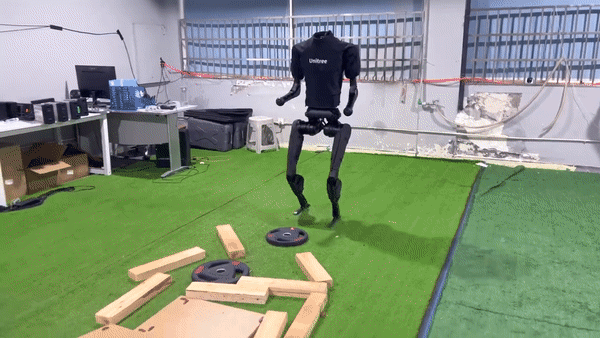
You will stagger if you get kicked, but you won’t fall down
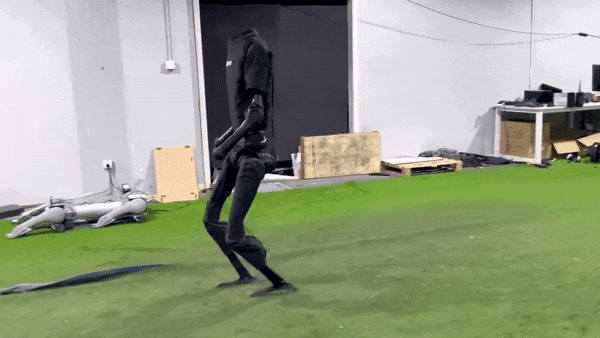
When the load increases to 30kg, the walking speed slows down:
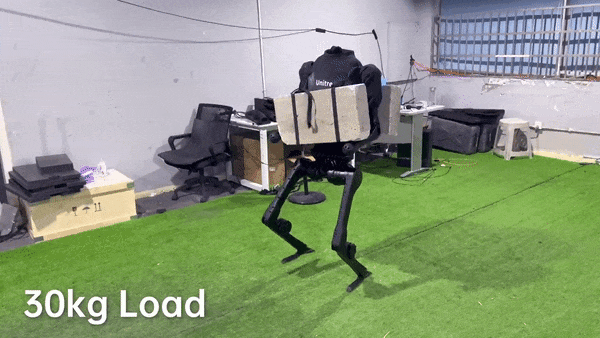
Go up a few steps and then come down one step at a time:
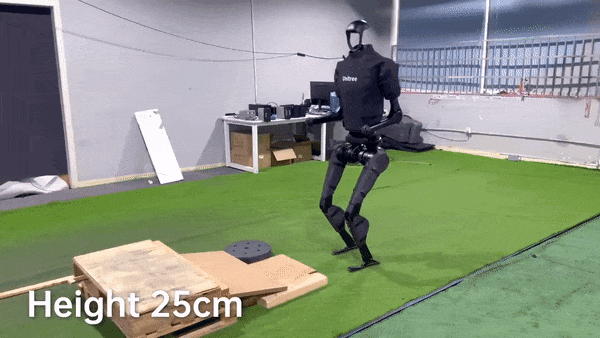
Add some challenges, allowing people to pull forward and push back, and still pass obstacles freely
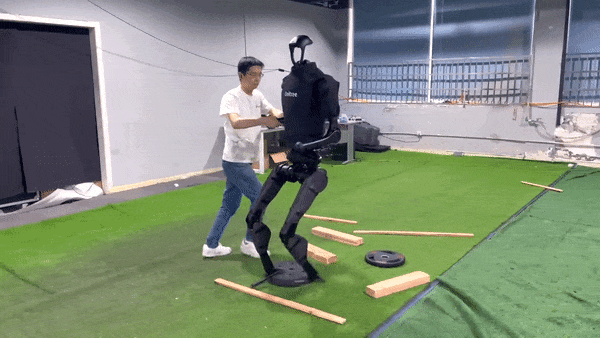
Finally, perform forward and backward, and you can pass the obstacles under your feet:

This humanoid robot is a well-known robot in China The universal humanoid robot H1 launched by the company Yushu Technology. Compared with the first version released in August, the humanoid robot in this viral video is the latest 2.0 upgraded version launched by Yushu Technology.

In appearance, H1 is about 1.8 meters tall and weighs about 47 kg. Like other independently walking robots, H1 has no face, just sensors and cameras for modeling its surroundings. H1 doesn't have hands yet, and the arms end in small pads.
Due to the M107 joint motor developed internally by Yushu, the robot's dynamic performance has been significantly improved, including movement flexibility, speed, endurance and load capacity. The single leg joint has 5 degrees of freedom, and the single arm joint has 4 degrees of freedom. The walking speed reaches 1.5 meters per second, which is equivalent to the walking speed of an adult. Unlike Asimo's walking posture on stilts in the past, H1's steps are smooth and steady, and it can even run quickly in small steps
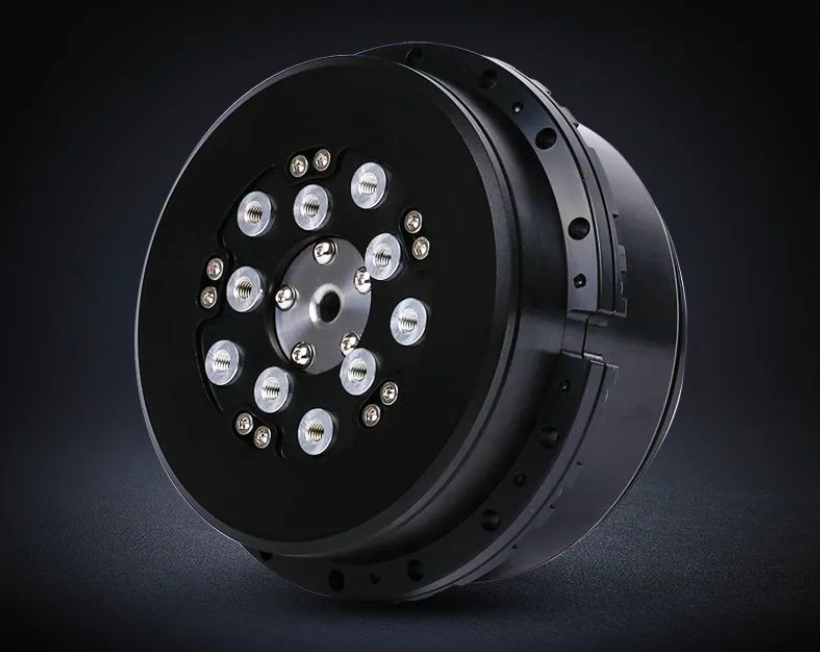
##M107 joint motor.
Compared with the Tesla humanoid robot joint motor, the M107 is smaller, lighter and more powerful. The maximum joint torque is 360N.m, which can support the robot to complete more complex actions and adapt to different terrains and walking states, but the weight is only 1.9 kg. Dual encoders are integrated inside the joints of H1. No matter what the initial posture of the robot is, it can resume normal operation at any position and posture, providing a better experience.

Parameter comparison with Tesla humanoid robot joint motor.
The "kick" seen in the video reproduces the "violent" challenge that Boston Dynamics robots faced back then. Although H1 staggered after being kicked, he was still able to move forward quickly. This is worth mentioning
In order to achieve smooth walking and obstacle avoidance, as well as interaction with the environment and users, and complete corresponding tasks, H1 is equipped with a 3D lidar and a depth camera , thus achieving 360-degree panoramic depth perception
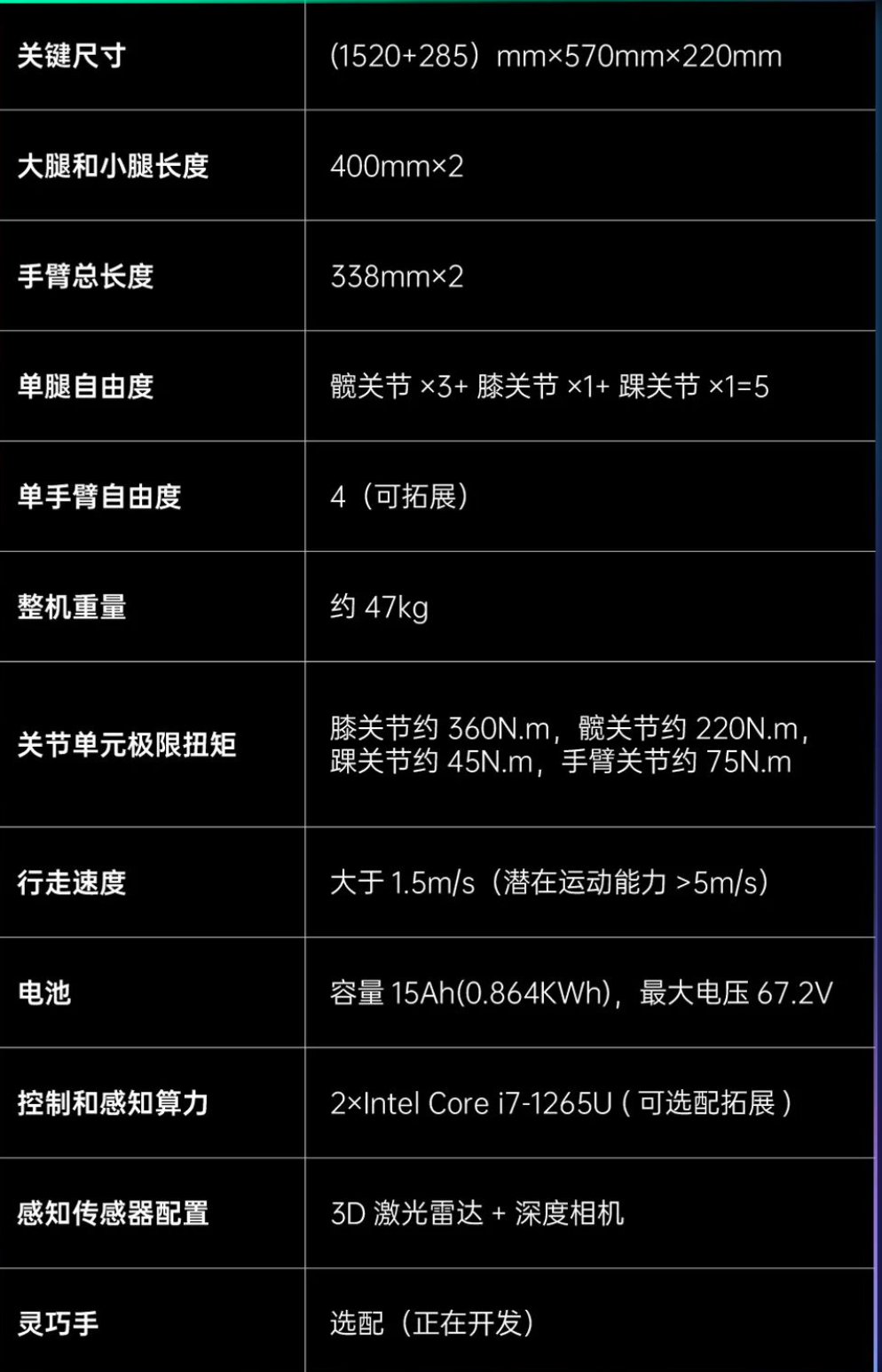
The depth camera is very suitable as a sensor for terrain perception and short-range safe obstacle avoidance of legged robots. It uses TOF (time of flight) technology to generate close-range, high-precision three-dimensional point cloud information based on traditional two-dimensional RGB imaging. Combined with attributes such as slope, span height, ruggedness, and the robot's own motion limitations, the robot can immediately Get an accessible map of the area to avoid or overcome obstacles. 3D lidar can realize the construction of dense point cloud maps of the environment, providing a basis for precise interaction between the robot and the environment.
The H1 universal humanoid robot currently sells for less than $90,000, making it relatively affordable for tech company buyers.
The above is the detailed content of Still tough! Domestic-made humanoid robots are mischievous and cost under $90,000. For more information, please follow other related articles on the PHP Chinese website!

Hot AI Tools

Undresser.AI Undress
AI-powered app for creating realistic nude photos

AI Clothes Remover
Online AI tool for removing clothes from photos.

Undress AI Tool
Undress images for free

Clothoff.io
AI clothes remover

AI Hentai Generator
Generate AI Hentai for free.

Hot Article

Hot Tools

Notepad++7.3.1
Easy-to-use and free code editor

SublimeText3 Chinese version
Chinese version, very easy to use

Zend Studio 13.0.1
Powerful PHP integrated development environment

Dreamweaver CS6
Visual web development tools

SublimeText3 Mac version
God-level code editing software (SublimeText3)

Hot Topics
 How to play picture sequences smoothly with CSS animation?
Apr 04, 2025 pm 05:57 PM
How to play picture sequences smoothly with CSS animation?
Apr 04, 2025 pm 05:57 PM
How to achieve the playback of pictures like videos? Many times, we need to implement similar video player functions, but the playback content is a sequence of images. direct...
 Zustand asynchronous operation: How to ensure the latest state obtained by useStore?
Apr 04, 2025 pm 02:09 PM
Zustand asynchronous operation: How to ensure the latest state obtained by useStore?
Apr 04, 2025 pm 02:09 PM
Data update problems in zustand asynchronous operations. When using the zustand state management library, you often encounter the problem of data updates that cause asynchronous operations to be untimely. �...
 How to quickly build a foreground page in a React Vite project using AI tools?
Apr 04, 2025 pm 01:45 PM
How to quickly build a foreground page in a React Vite project using AI tools?
Apr 04, 2025 pm 01:45 PM
How to quickly build a front-end page in back-end development? As a backend developer with three or four years of experience, he has mastered the basic JavaScript, CSS and HTML...
 How to implement nesting effect of text annotations in Quill editor?
Apr 04, 2025 pm 05:21 PM
How to implement nesting effect of text annotations in Quill editor?
Apr 04, 2025 pm 05:21 PM
A solution to implement text annotation nesting in Quill Editor. When using Quill Editor for text annotation, we often need to use the Quill Editor to...
 Electron rendering process and WebView: How to achieve efficient 'synchronous' communication?
Apr 04, 2025 am 11:45 AM
Electron rendering process and WebView: How to achieve efficient 'synchronous' communication?
Apr 04, 2025 am 11:45 AM
Electron rendering process and WebView...
 How to achieve the effect of high input elements but high text at the bottom?
Apr 04, 2025 pm 10:27 PM
How to achieve the effect of high input elements but high text at the bottom?
Apr 04, 2025 pm 10:27 PM
How to achieve the height of the input element is very high but the text is located at the bottom. In front-end development, you often encounter some style adjustment requirements, such as setting a height...
 How to solve the problem that the result of OpenCV.js projection transformation is a blank transparent picture?
Apr 04, 2025 pm 03:45 PM
How to solve the problem that the result of OpenCV.js projection transformation is a blank transparent picture?
Apr 04, 2025 pm 03:45 PM
How to solve the problem of transparent image with blank projection transformation result in OpenCV.js. When using OpenCV.js for image processing, sometimes you will encounter the image after projection transformation...
 How to use CSS to achieve smooth playback effect of image sequences?
Apr 04, 2025 pm 04:57 PM
How to use CSS to achieve smooth playback effect of image sequences?
Apr 04, 2025 pm 04:57 PM
How to realize the function of playing pictures like videos? Many times, we need to achieve similar video playback effects in the application, but the playback content is not...





